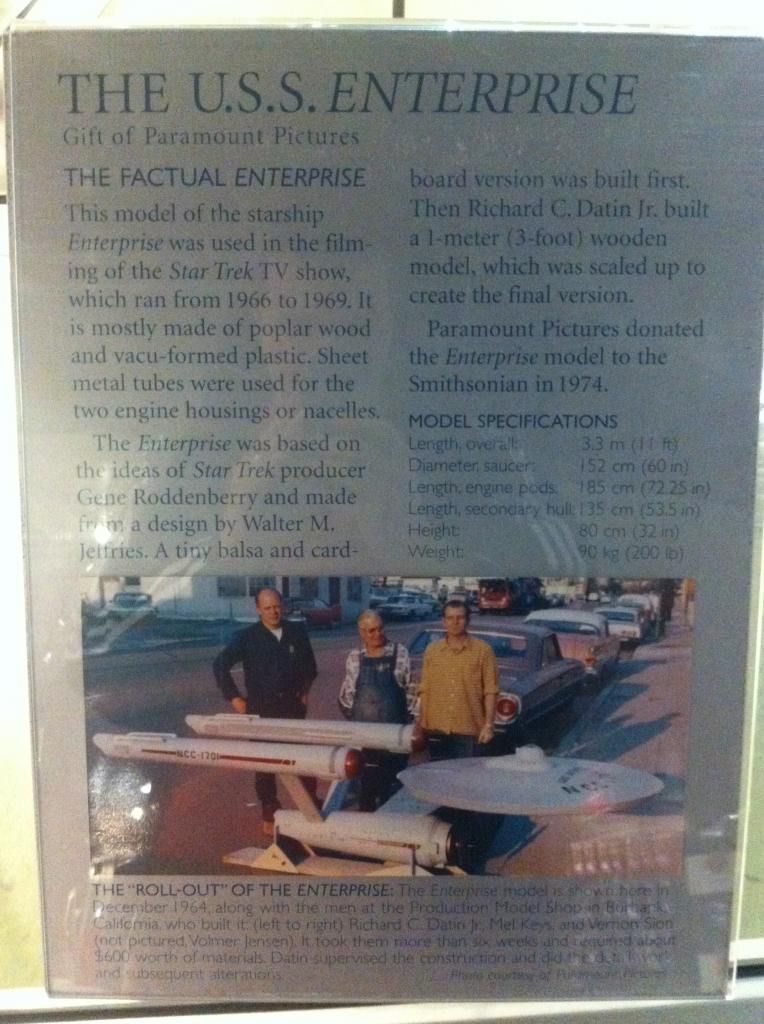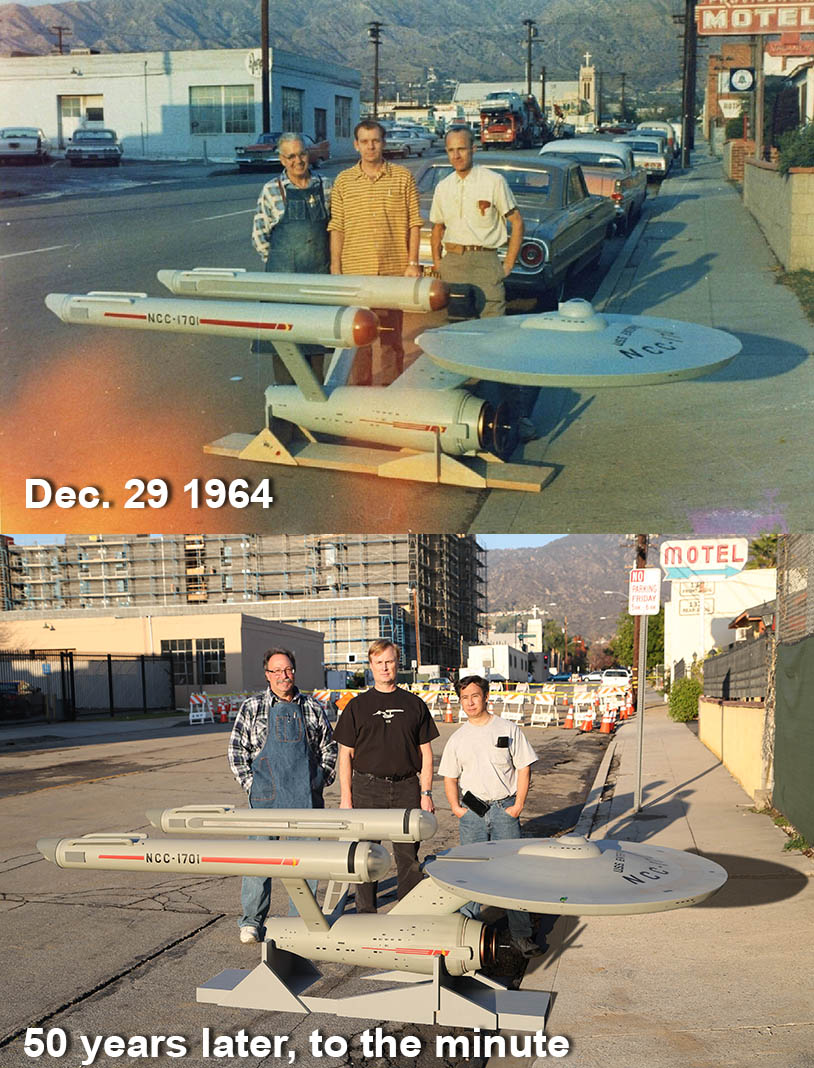You are using an out of date browser. It may not display this or other websites correctly.
You should upgrade or use an alternative browser.
You should upgrade or use an alternative browser.
The Enterprise Restoration Project
- Thread starter AshGL1914
- Start date
Shaw
Well-Known Member
The real significant modification to the model came in 1974 when the Smithsonian decided to set the model up for a hanging display. As you pointed out, the nacelles and support pylons were designed to slide together, but because they were going to stabilize the model with attachment points on the nacelles, bolts were added to lock the nacelles and supports together and to the secondary hull. The bolts themselves have been covered over, so it helps to know where they are if you plan on disassembling the model.... When the 1991 renovation was done; the original pylons were routed out to accommodate internal electrical wiring for the motors and lights (the original power cables were run on the exterior of the pylons). No telling what is happening now with the new design due to the groove that was cut into the original solid wood pylon. Honestly, I'm not even sure if the engine pylons can be removed anymore and as far as the split in the secondary hull; it could be as simple as some of the filler has broken loose. What ever the case I am sure the NASM can handle the repair.
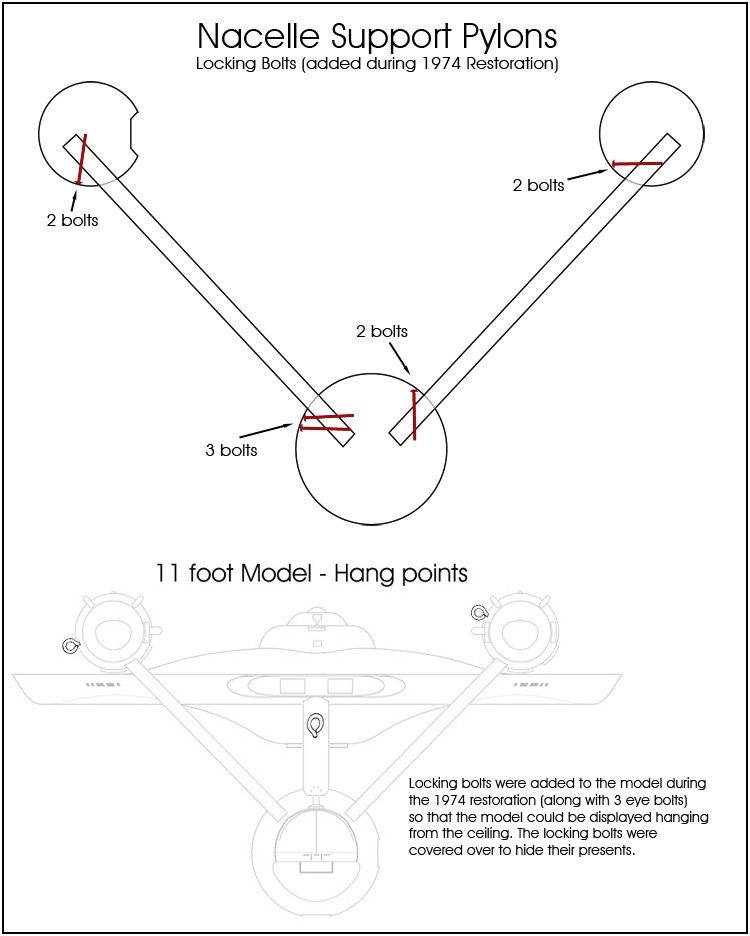
Similarly, the screws that hold the rear metal shell of the nacelles to the wood front third and aft end caps are covered over, so it helps to know where those are too...
And if the goal is to restore it to original filming condition, it would be helpful to restore the original painted features on the inboard side of the starboard nacelle and support (which the Smithsonian painted over in 1974)...
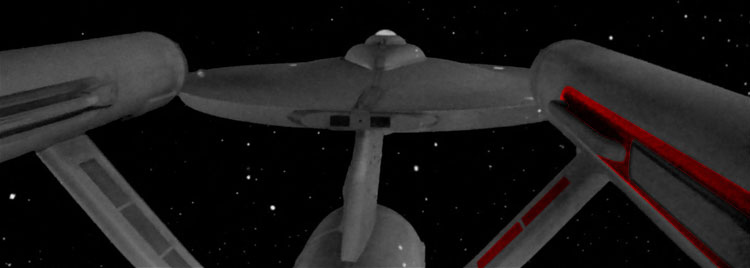
In the 1991 restoration a gray field was added to simulate the inboard channel, but originally there was more to how it was painted on (which I was able to reconstruct). Even though the cracks are making it easy to see in some spots, knowing where each of the planks are on the secondary hull would be helpful, along with the interior cavity walls (though there are x-rays showing where they are).
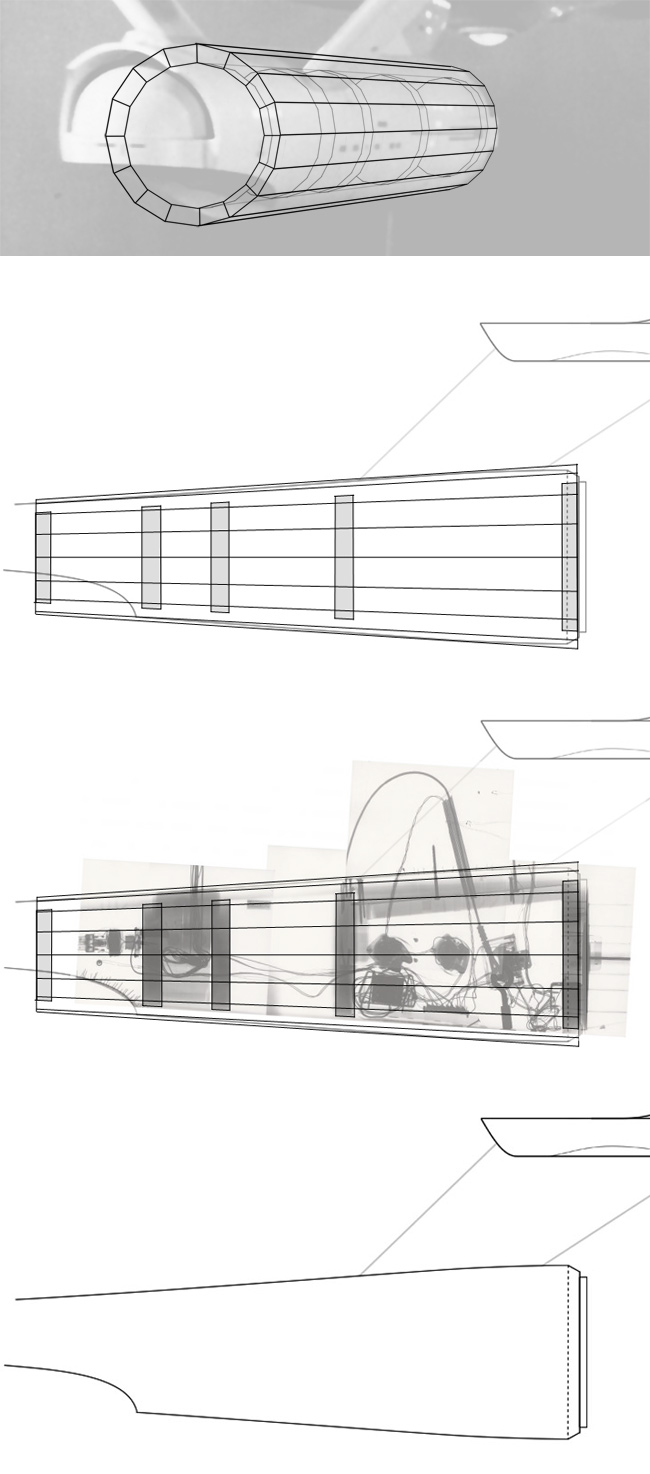
As for the dream team that people keep throwing together... most of these people have the same background as Ed Miarecki, so I'm not sure why they would be good choices. At this point the best people would know model construction techniques like those used in the original construction. Someone with extensive experience dealing with wood construction would be helpful. We are most likely better if none of the dream team are part of this repair/restoration.
Besides, most of them deal mainly with the idealized TOS Enterprise (like what we got with the 1/350 kit), which the 11 foot model is most definitely not. As a historical artifact, it would be better to restore/maintain elements as they were when it was a filming model. For example, the ribs on the intercoolers, when those were added to the model for the series upgrade, only the ones they thought were going to be visible were added...
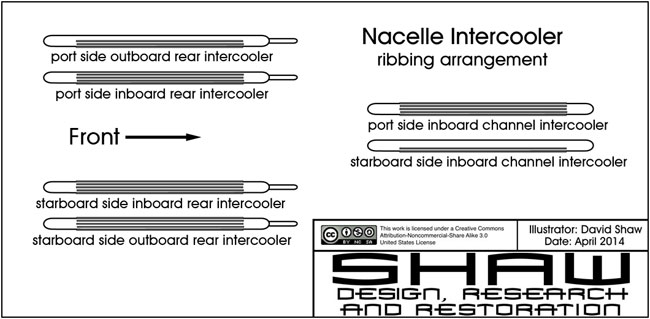
Someone who is used to dealing with the idealized TOS Enterprise would most likely want to add in the missing ribs. In my opinion, that would damage the historical aspect of the model in the same way that the modern weathering did back in 1991.
feek61
Sr Member
Excellent information and I agree with all of your points. I really don't understand preserving a history that is mostly botched restorations by the very same museum who accepted the model straight from the studio. Please return her to the way she looked on the last day of filming!!! Shaw, as usual your knowledge of the E is impressive.
Tiberius Kirk
Sr Member
Great stuff Shaw! Thanks for sharing.
Here's some pictures I took earlier this year while in the gift shop…
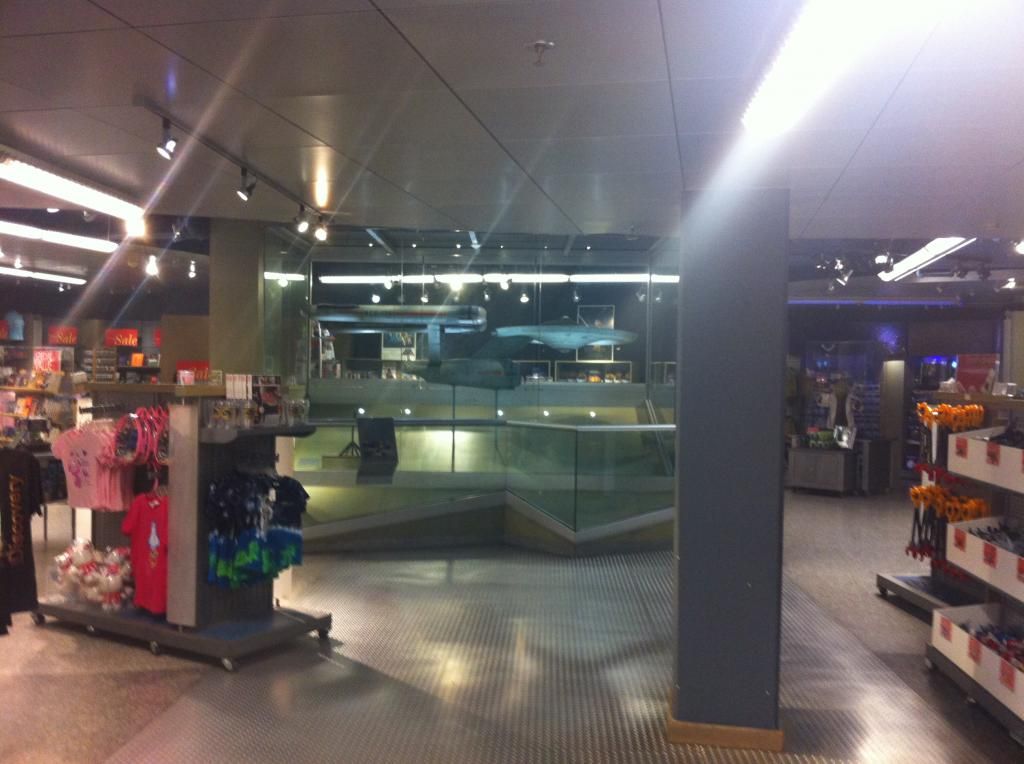

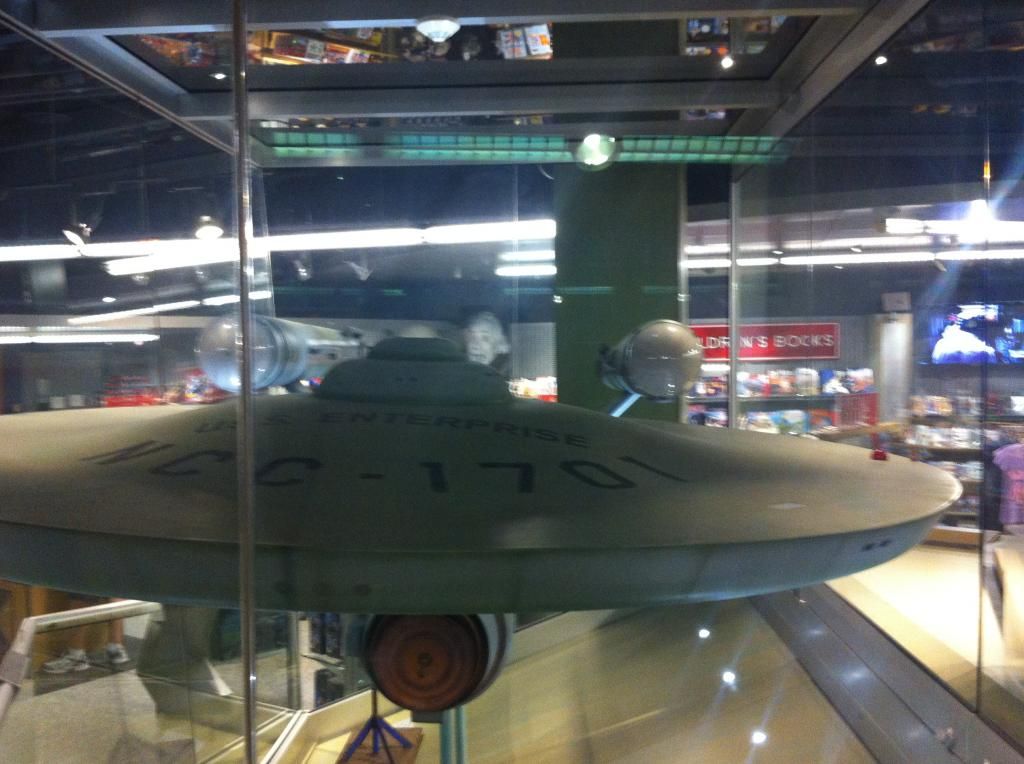 [/URL[URL=http://s942.photobucket.com/user/MJA010174/media/IMG_3946_zps41aa137a.jpg.html]
[/URL[URL=http://s942.photobucket.com/user/MJA010174/media/IMG_3946_zps41aa137a.jpg.html]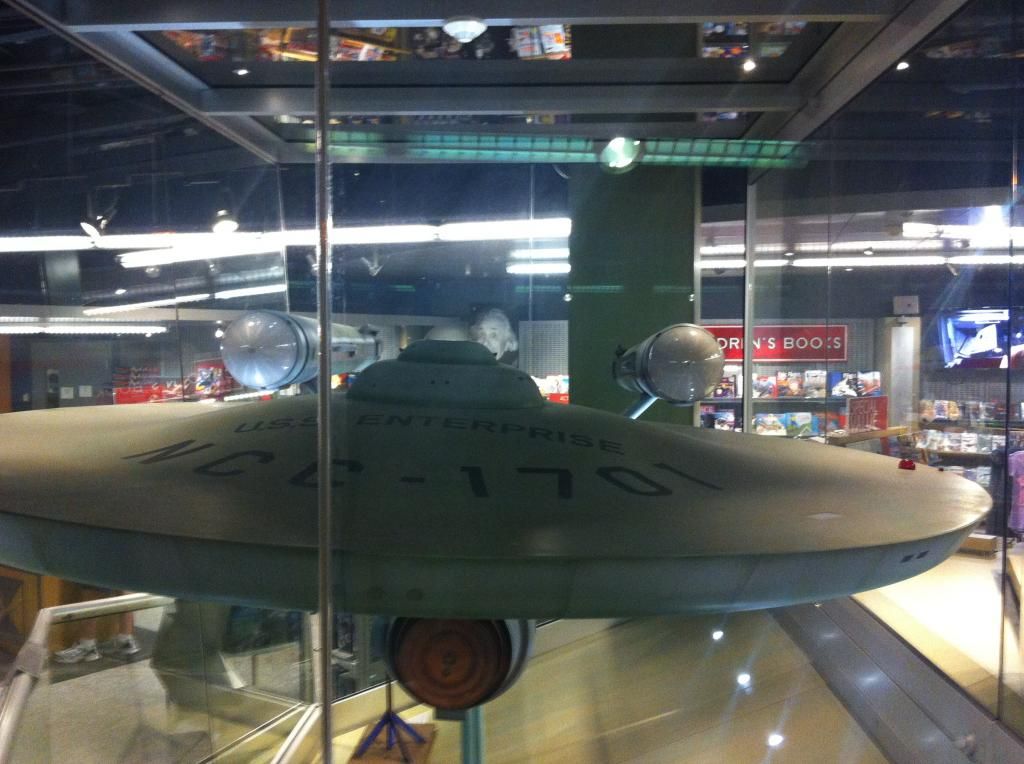
 [/URL[URL=http://s942.photobucket.com/user/MJA010174/media/IMG_3910_zps459b0057.jpg.html]
[/URL[URL=http://s942.photobucket.com/user/MJA010174/media/IMG_3910_zps459b0057.jpg.html]
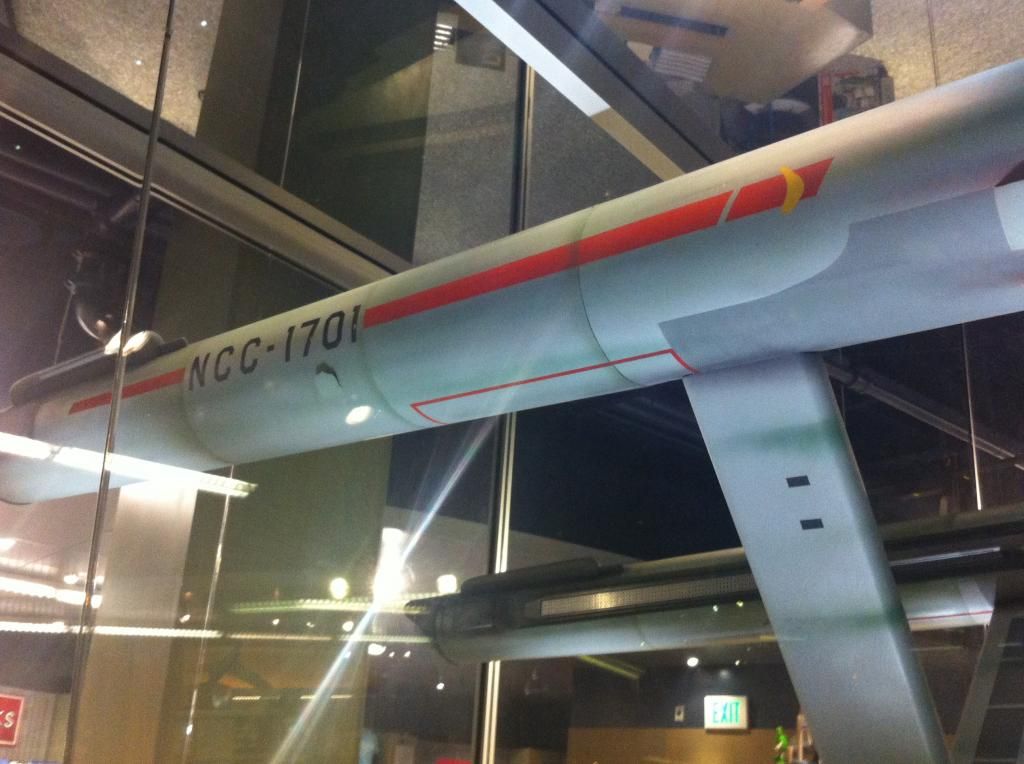


 [/URL[URL=http://s942.photobucket.com/user/MJA010174/media/IMG_3946_zps41aa137a.jpg.html]
[/URL[URL=http://s942.photobucket.com/user/MJA010174/media/IMG_3946_zps41aa137a.jpg.html]
 [/URL[URL=http://s942.photobucket.com/user/MJA010174/media/IMG_3910_zps459b0057.jpg.html]
[/URL[URL=http://s942.photobucket.com/user/MJA010174/media/IMG_3910_zps459b0057.jpg.html]

Last edited:
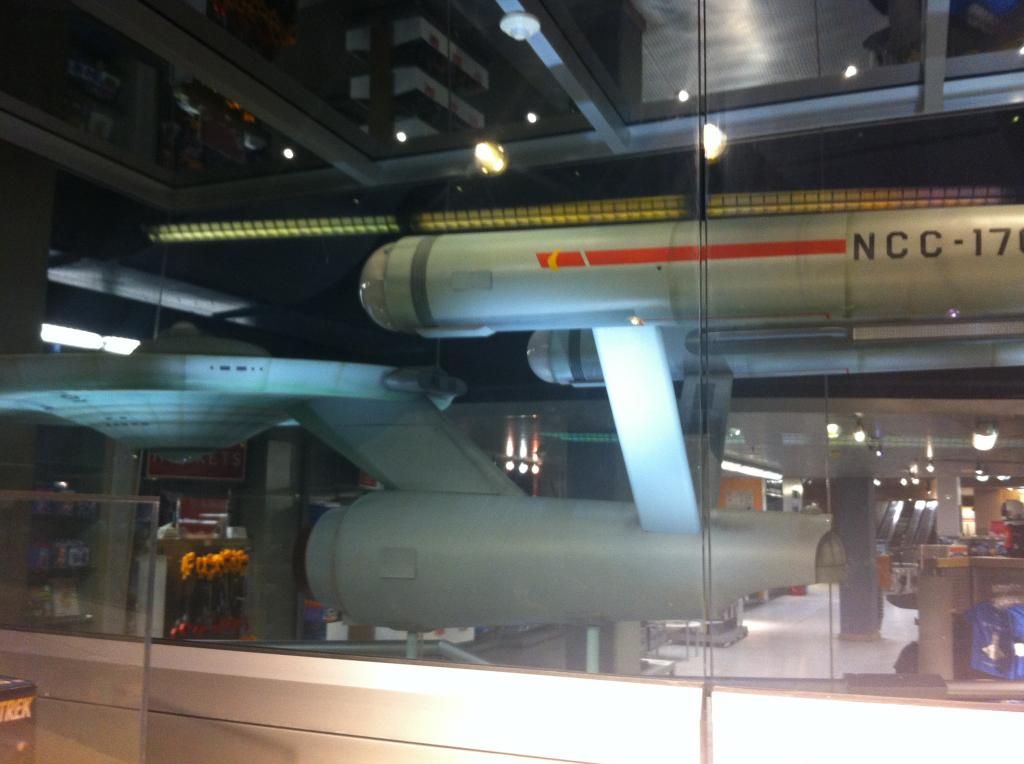
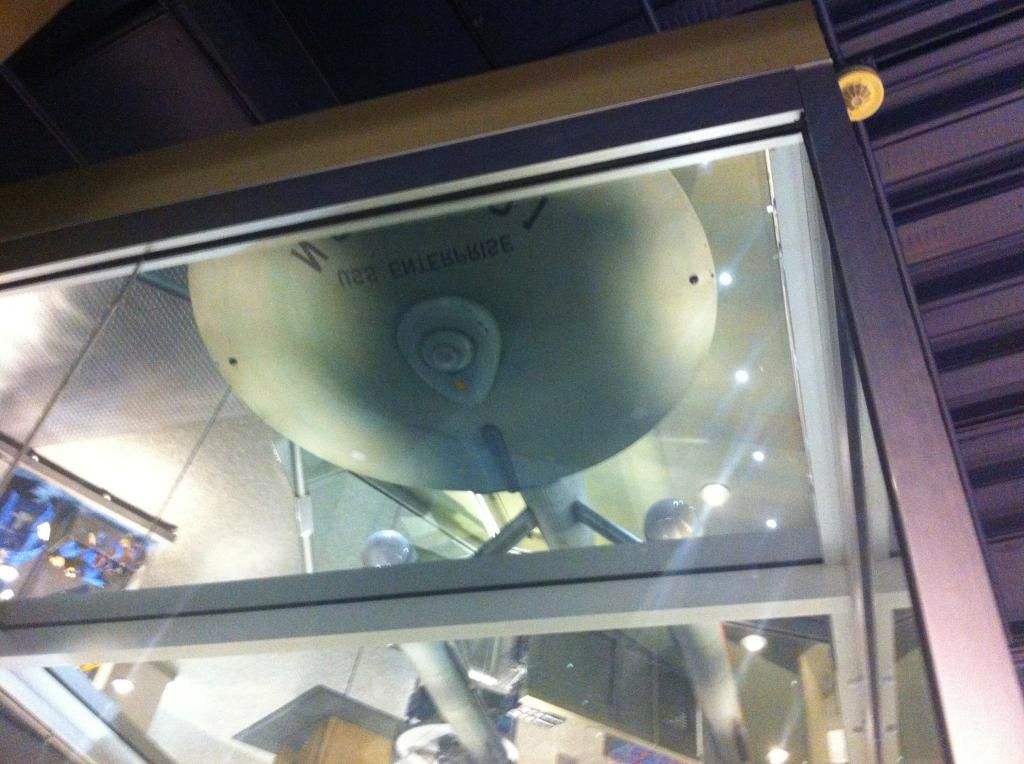
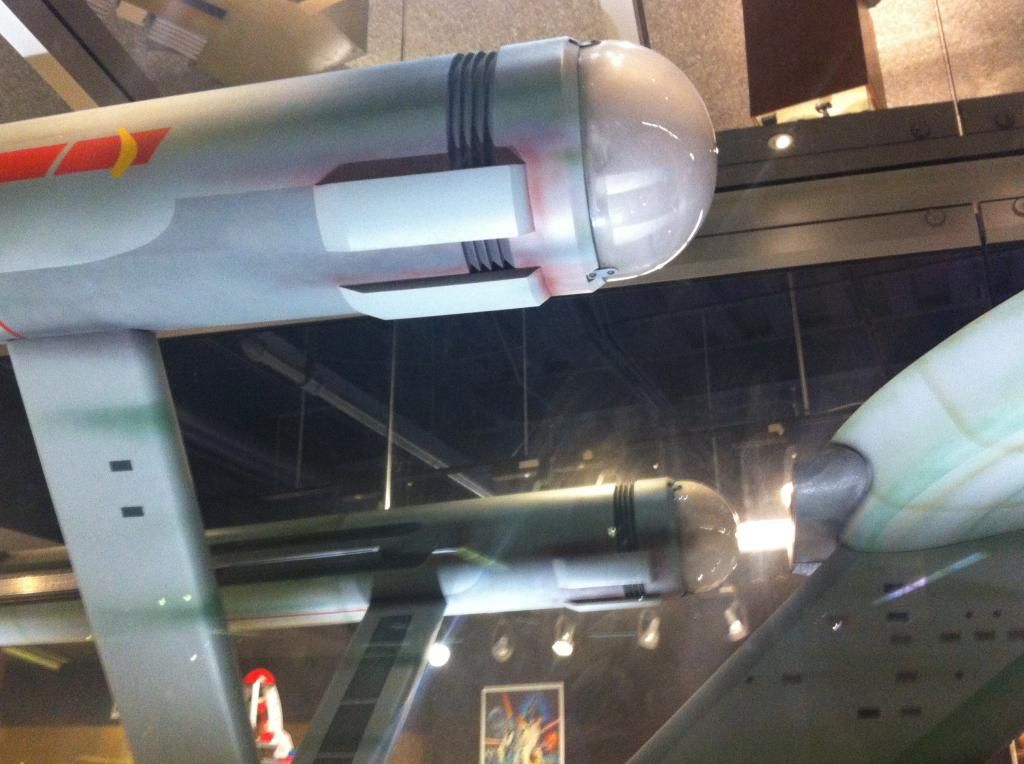
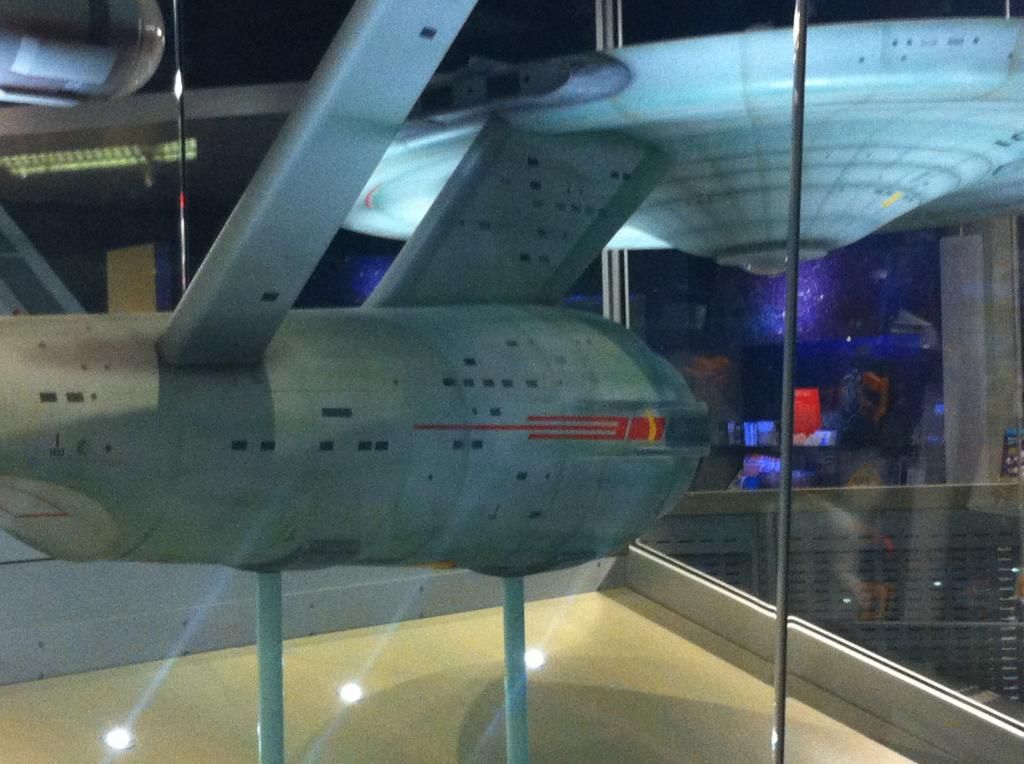
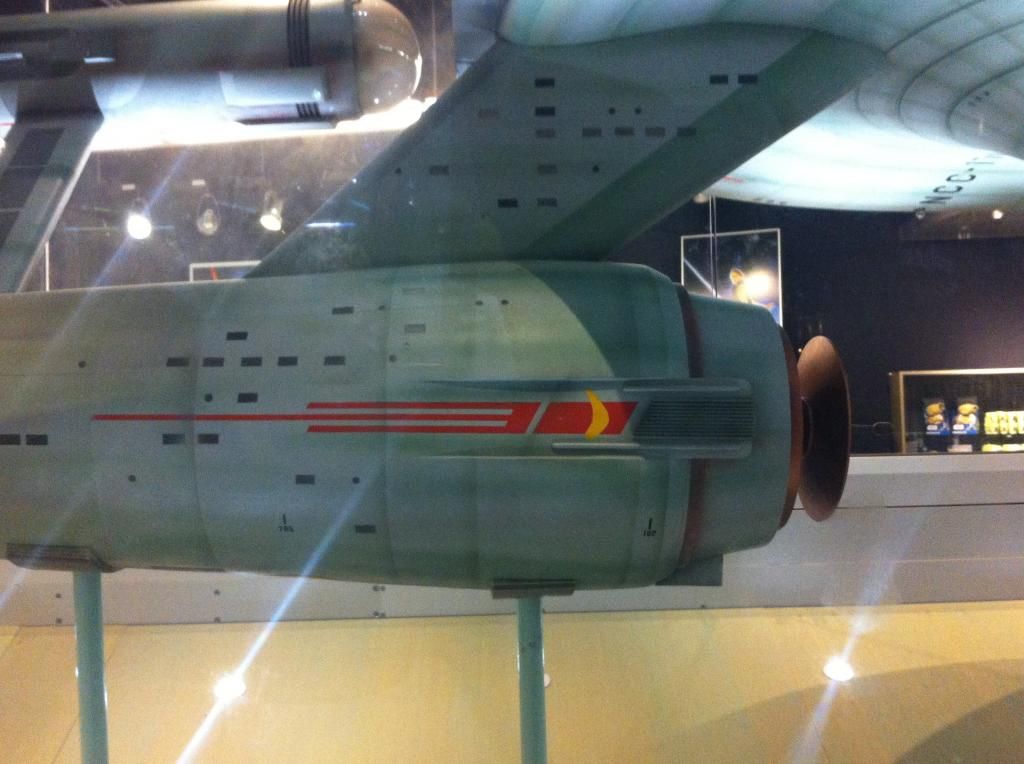
- - - Updated - - -
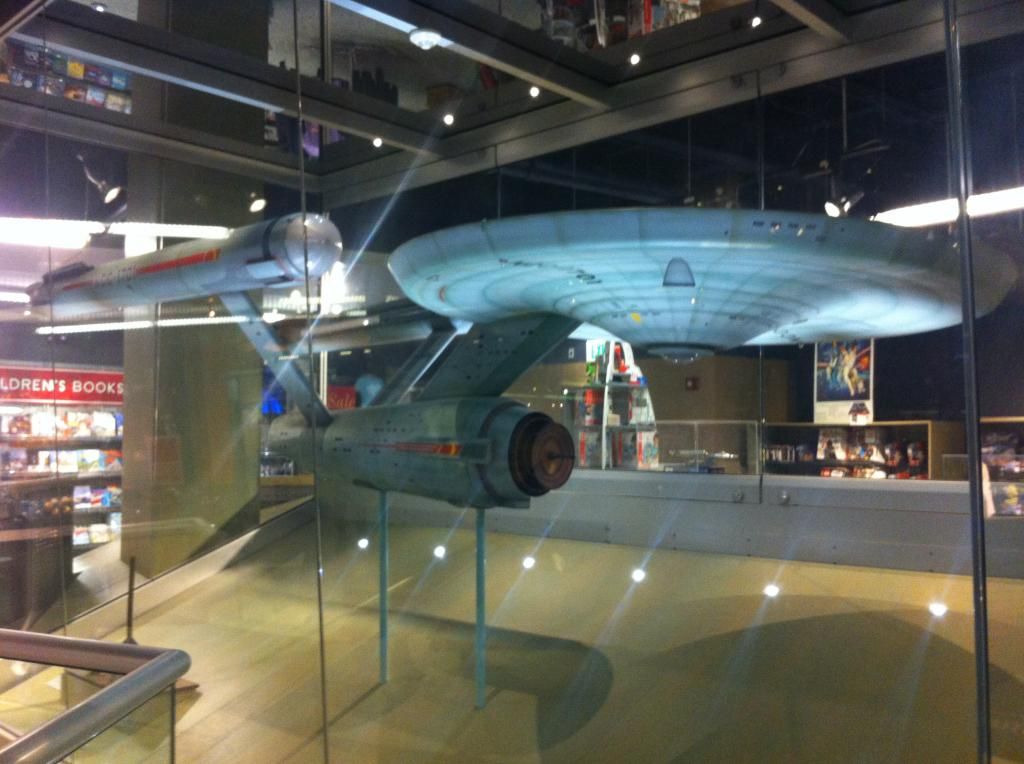
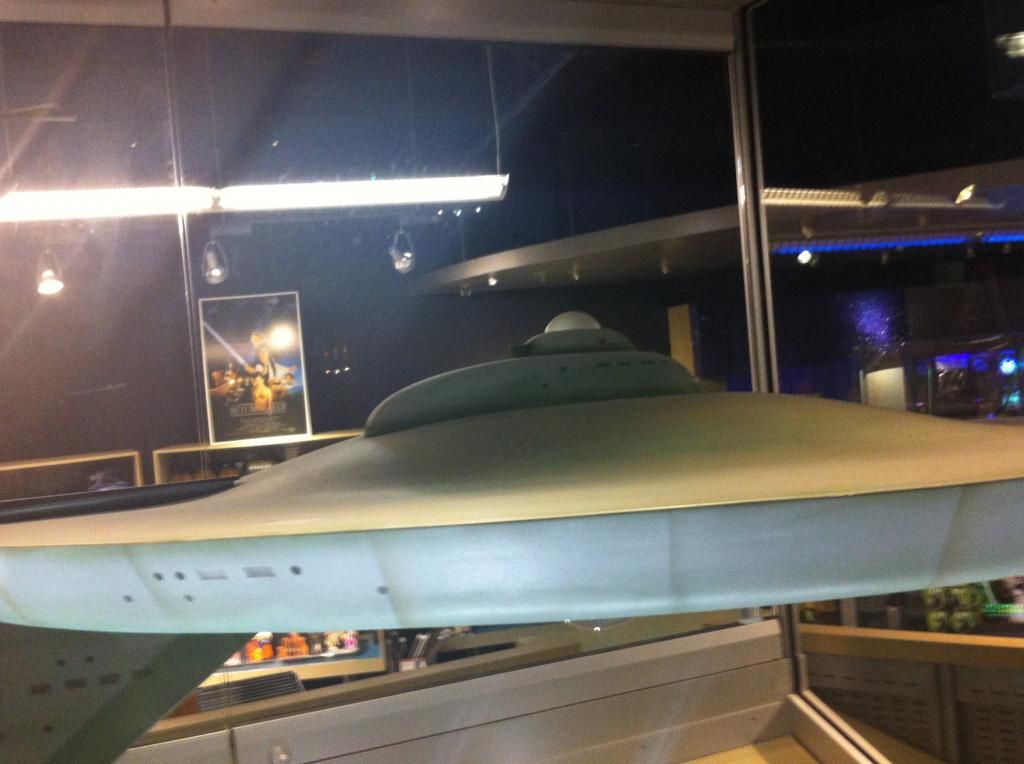
 [/URL[URL=http://s942.photobucket.com/user/MJA010174/media/IMG_3921_zps579ecc91.jpg.html]
[/URL[URL=http://s942.photobucket.com/user/MJA010174/media/IMG_3921_zps579ecc91.jpg.html]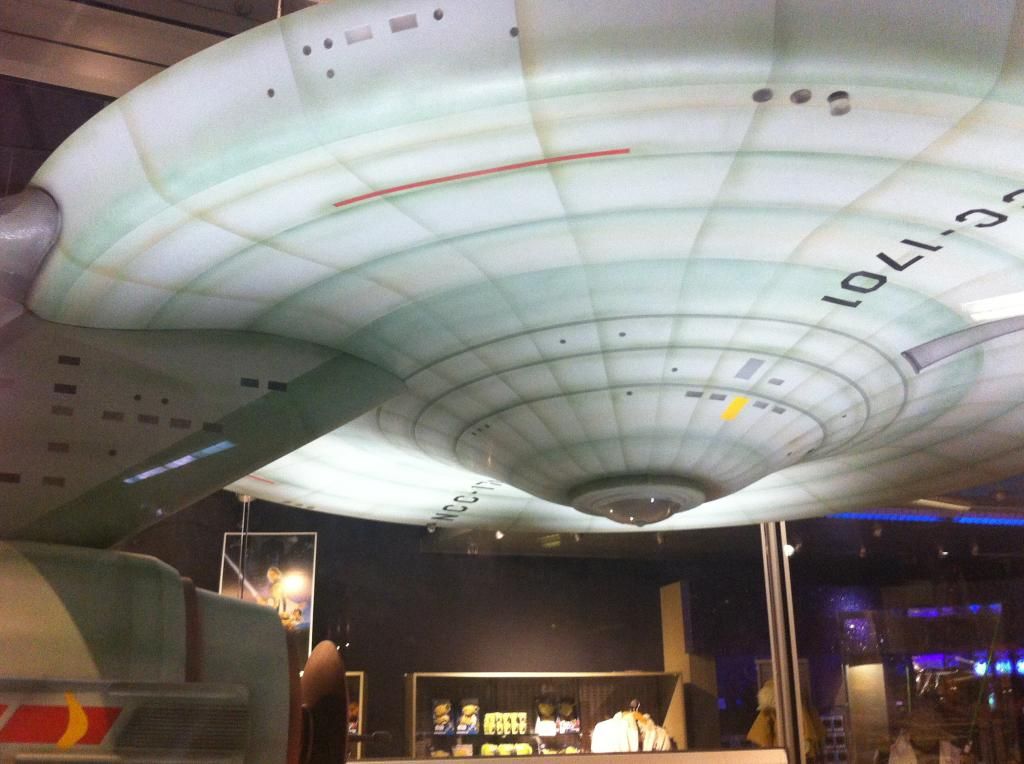
You can see here that one of the acrylic window tubes is beginning to slide out of its hole on the lower starboard side of the primary hull...
Last edited:
On a side note, I apologize for all the lens flare in the photos--Abrams would be proud. 
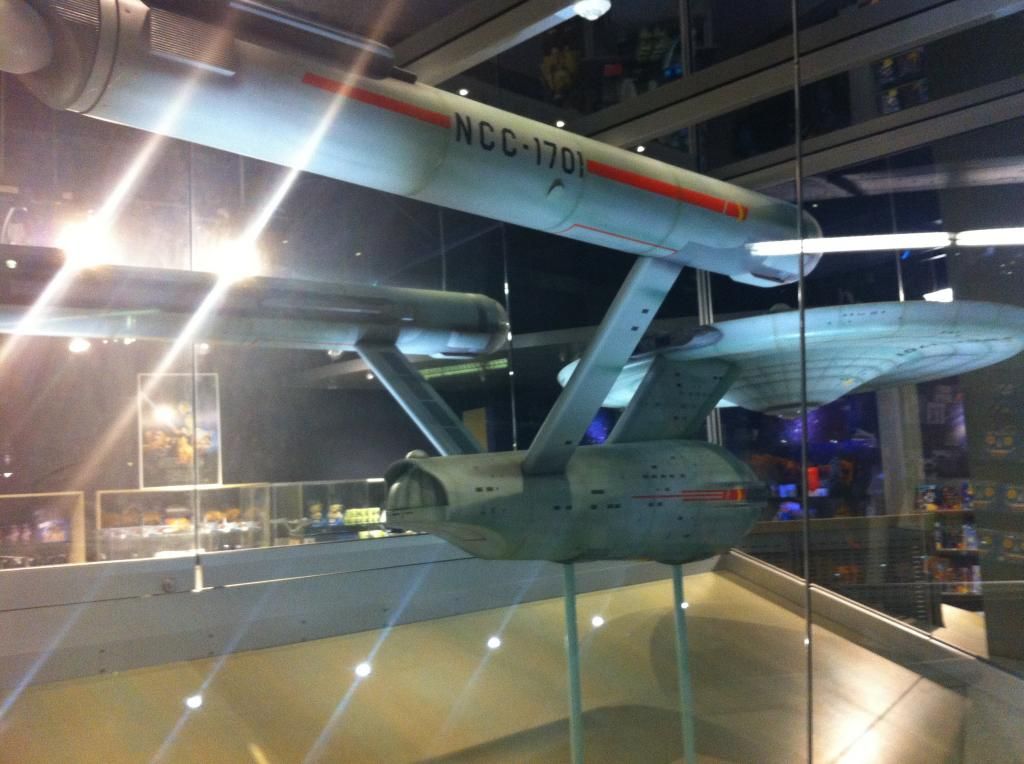



For the record the plaque is verified wrong about the registry, I let the museum know, provided the proof but for some
reason they never corrected it, though they did fix the web page info.
I did get an invite for a personal guided tour of the museum though.
reason they never corrected it, though they did fix the web page info.
I did get an invite for a personal guided tour of the museum though.
Q: Where did the numbers NCC-1701 come from?
MJ: The rumors ran around, I know, for a long time that the numbers on my airplane came off the Enterprise and others said it went on the Enterprise from my airplane. It did neither. I didn't go to much of a great extent to squash that rumor. I just thought it seemed to be so much fun. The number was on the airplane when I got it and that was a year after the original Star Trek folded.
NC stood for the United States Commercial and Russia wound up with CCCC for their national markings. Of course, it had been said for a long time that no one country could afford to really go up into outer space. Well of course Russia was sort of our counterpart in the space thing, I said, "Well, we'll use some of each" so it became NCC. For numbering I needed numbers that could be instantly recognized. Therefore three, six, eight, and nine would not work I said, "One seven. Okay, so it's "17th" basic design for the Federation. Serial number one. A prototype. 1701". I did put that on paper to guide anybody else following * though I didn't know if anyone else would want to follow it * but the second ship of the same type would have been a "02" and a modification would have a letter. Standard military practice. But that's basically what it was a number you could pick up immediately."
MJ: The rumors ran around, I know, for a long time that the numbers on my airplane came off the Enterprise and others said it went on the Enterprise from my airplane. It did neither. I didn't go to much of a great extent to squash that rumor. I just thought it seemed to be so much fun. The number was on the airplane when I got it and that was a year after the original Star Trek folded.
NC stood for the United States Commercial and Russia wound up with CCCC for their national markings. Of course, it had been said for a long time that no one country could afford to really go up into outer space. Well of course Russia was sort of our counterpart in the space thing, I said, "Well, we'll use some of each" so it became NCC. For numbering I needed numbers that could be instantly recognized. Therefore three, six, eight, and nine would not work I said, "One seven. Okay, so it's "17th" basic design for the Federation. Serial number one. A prototype. 1701". I did put that on paper to guide anybody else following * though I didn't know if anyone else would want to follow it * but the second ship of the same type would have been a "02" and a modification would have a letter. Standard military practice. But that's basically what it was a number you could pick up immediately."
Last edited:
http://trekcore.com/blog/2014/12/smithsonian-enterprise-update/
EXCLUSIVE INTERVIEW: Heading Into 2015 with the Smithsonian’s USS Enterprise Conservation Project
POSTED DECEMBER 31, 2014
Back in September, we spoke with Dr. Margaret Weitekamp, the lead curator heading up the Enterprise preservation project at the Smithsonian's National Air & Space Museum.
As we close out the year, we wanted to check in and see what progress has been made so far in the three months since the Enterprise left Washington -- and who's been brought on board to assist with the preservation.
TREKCORE: What can you tell us about how things have progressed on the Enterprise project since we spoke back in September?
DR. MARGARET WEITEKAMP: Well, as you know, we were able to take the model off display and have moved it to the Steven F. Udvar-Hazy Center where we have our Emil Buehler Conservation Laboratory.
That has really given our chief curator time to really get a very close look at the model and has allowed us to really narrow in on issues of paint, issues of structure, and to start planning in which directions our conservation efforts are going to go.
We really are thinking of this as conservation of – as of this week – a fifty-year old object. December 29th was fiftieth anniversary of its delivery to Desilu back in 1964, and it's a particularly opportune moment to come back to the physical model and to think about it very specifically.
The museum has been doing its own work and evaluation which has included using UV light to analyze the paint, and to figure out where we have clearly repainted areas and where we have areas that seem to be more uniform in their paint. The top of the saucer section, for example, leads us to believe that it is original paint – it all fluoresces in the same way.
So we've been doing our internal work on that, which has also included some X-rays done in cooperation with the National Zoological Park. They were kind enough to send two of their veterinary radiography technicians over to the Museum and we were able to do X-rays of the saucer section – but we're still waiting on getting those files from the zoo.
We're hoping that the X-ray team might be able to come back in January and take a look at the rest of the Enterprise model's structure. It turns out that it takes quite a long time to very carefully set up each of those X-ray shots, so getting complete X-rays of the saucer took the better part of the time they were with us.
enterprise-UVUltraviolet photography of the top of the Enterprise saucer; the original paint has started
to show signs of “traction cracking” caused by shrinkage due to the age of the model.
Courtesy of the Smithsonian's National Air & Space Museum.
TREKCORE: Did you call them in because of the size of the model required specialized equipment, or was just because of their expertise?
WEITEKAMP: We used them because they are also part of the Smithsonian. We’re taking advantage of our internal resources, because their X-ray equipment is not a device that the National Air & Space Museum normally has on hand – but it’s something one of our conservators knew our colleagues had and would be able to use.
The Enterprise has been X-rayed before, but that was done by sending it out for analysis. This is an opportunity – since the Zoological Park team had a portable radiography unit – to bring the equipment in house and save us the trouble of having to move the model an additional time.
It was really interesting. You can get a good sense of the interior; all of the little penny nails and things like that. I'm excited to get some of that imagery back. It comes in very large files that are specific to the scanning system that they have; they are in the process of converting them to a more standardized image file that we can use when working with the model.
One of our photographers is excited to be able to knit those X-rays together to give us some large-scale swaths of the structure all in one view. That's something that's pending and that we'll have available to us down the road.
TREKCORE: Have you been able to pull in members of the Star Trek production team, or other consultants to assist with the project? Last time we spoke you were still in the early stages of contacting people to help.
WEITEKAMP: We’ve pulled together a volunteer special advisory committee of what are basically Enterprise experts. They're a group of people from all across the industry – we've been able to have a significant email correspondence, as well as a giant video conference where we could all talk about what some of the issues are with the model based on their experience.
The Museum is trying to assemble as much information as we can to really create a detailed list of issues that we want to address in terms of structural stabilization, cleaning, paint issues, display concerns, decal artwork, and things like that.
We're really trying to create a comprehensive list before we do any actual work so we're able to plan as much as we can ahead of time.
TREKCORE: Do you have any plans for that team to be involved with the actual preservation work, or do you expect them to serve more in an advisory capacity only?
WEITEKAMP: Well, we are still making plan on how that's going to work. John Goodson from ILM was in the area over the holidays, so I was able to take him to see the model and we had a very good discussion standing next to it.
My hope is, in the spring, that I'll be able to bring the advisory committee to the Museum to have an in-person meeting allow them a chance to look at the model closely. That will allow them to advise the Museum on how we should plan out the actual work that needs to be done.
We have not made final decisions of exactly how all that is going to work, but I'm really delighted that these folks were willing to lend their expertise to this project, because as much as we have deep information about the model, these professionals have a lot of practical, hands-on knowledge this type of models.
It's such a wonderful resource and we're very grateful for their willingness and their enthusiasm.
TREKCORE: When we spoke in September, you had mentioned a concern with not just the paint, but the structural sagging affecting parts of the model. Was there anything specific that has jumped out as an immediate concern for your to-do list?
WEITEKAMP: Well, before the model came off display, we could see the two nacelles were starting to sag and spread apart slightly.
From talking with the advisory committee, I heard from a few of them that issue is a common problem with the Enterprise design. They've seen the sagging in other studio models, in commercial model kits, in consumer products created in the Enterprise design...
The charm of the Enterprise design is that it instantly looks like it wouldn't well in gravity. It looks like something that needs to float in a weightless environment. The trick, then, is having a model built of wood, plastic, and little bits of metal, exist in fifty years of Earth gravity!
We're hopeful that if we can get a good look at how the nacelle pieces are joined to the main body of the ship, we may be able to stabilize them without having to add external supports to the display. It's been nice that the model has been able to be displayed in a very similar form to the way it was used initially; for a long time, the Museum hung it from a central point.
From the year 2000, it had been displayed on a stand at the central part of the hull, giving it that same kind of 'floating' look – but we're going to have to make some decisions about the best ways to support the model, now that it's fifty years old.
Again, we still haven't made a decision about exactly how we're going do to that. I want to get a better look at the joints that hold the nacelles on and think about the long-term health of the model in terms of a display plan.
TREKCORE: And the secondary X-ray passes are going to help with some of that decision-making process?
WEITEKAMP: I think it will, yes. I know that those joints are something that members of the advisory committee – when I asked them to recommend a spot on the model where they wanted to see X-rays – they were adamant to see the two joints where the nacelles go into the main hull of the ship, and how that whole area is constructed.
TREKCORE: We've seen some of the old X-ray photos from an earlier analysis, and they could definitely use an upgrade.
WEITEKAMP: The technology has really improved in the last fifteen years or so since those X-rays were done. The X-rays that we're getting now are so sensitive that in some shots, we can actually see the grain in the wood!
TREKCORE: Oh, wow!
WEITEKAMP: Yeah, it's a much more detailed and granular look at the construction, and I think that it will really help a lot. We want to be minimally invasive as we possibly can when we work with the model.
TREKCORE: Well, from what you’ve said, that's probably as much as you’re able to share, being so early in the process...
WEITEKAMP: It really is, and it's going to be some time before show the public these new X-rays; I’m just as eager to see the images myself!
We were very gratified that to have such support from the National Zoological Park. The folks who were doing the scans lent us not just the technology, but also a lot of expertise on the best way to set things up to get the best images.
At one point, we could see them looking the model over and thinking hard, and we asked them what they were doing. They said, "Well, we're trying to figure out the relative density of the saucer of this model, compared to what we know about the density of animal flesh!"
They were doing some mental calculations to set up the equipment properly, and they really nailed it! We got very sharp pictures of the model, and I'm excited. It's going to help us quite a bit, but it will be a few months before we get that processed for our use.
TREKCORE: It's really very interesting, all the work you and your team are going. We know that the fans are glad that this review of the model seems to be above and beyond the prior projects, though perhaps it's just the technology that's improved so much since the last time around.
WEITEKAMP: The technology has improved, and I get to stand on the shoulders of giants. I get to base what I'm doing on what my colleagues have done on the previous versions of this project.
With new technology, new expertise, and new thoughts about what the conservation techniques can be, I expect that the next curator to take on the Enterprise will do even better than I do today, because the technology will continue to improve.
Hopefully they will be able to base whatever they may do for the Enterprise in twenty years on what we do today. It's not so much that we are 'better' than the folks that have come before, but it's having the additional resources available to us, and the ability to lean on our predecessors’ work as a starting point.
TREKCORE: Well, if this project works out well, the Enterprise won’t need to be revisited again for at least a few more curators!
WEITEKAMP: [Laughs] I sure hope so, that's my goal!
Dr. Margaret A. Weitekamp curates the Air and Space Museum's social and cultural dimensions of spaceflight collection, more than 4,000 artifacts that include space memorabilia and space science fiction objects.
These everyday mementos of the space age – which include toys and games, clothing and stamps, medals and awards, buttons and pins, as well as comics and trading cards – complete the story about spaceflight told by the Museum's collection of space hardware and technologies.
If you're in the Virginia area on January 24, Dr. Weitekamp and the Enterprise model will be participating in an open house event at the Udvar-Hazy Center, open to the general public.
EXCLUSIVE INTERVIEW: Heading Into 2015 with the Smithsonian’s USS Enterprise Conservation Project
POSTED DECEMBER 31, 2014
Back in September, we spoke with Dr. Margaret Weitekamp, the lead curator heading up the Enterprise preservation project at the Smithsonian's National Air & Space Museum.
As we close out the year, we wanted to check in and see what progress has been made so far in the three months since the Enterprise left Washington -- and who's been brought on board to assist with the preservation.
TREKCORE: What can you tell us about how things have progressed on the Enterprise project since we spoke back in September?
DR. MARGARET WEITEKAMP: Well, as you know, we were able to take the model off display and have moved it to the Steven F. Udvar-Hazy Center where we have our Emil Buehler Conservation Laboratory.
That has really given our chief curator time to really get a very close look at the model and has allowed us to really narrow in on issues of paint, issues of structure, and to start planning in which directions our conservation efforts are going to go.
We really are thinking of this as conservation of – as of this week – a fifty-year old object. December 29th was fiftieth anniversary of its delivery to Desilu back in 1964, and it's a particularly opportune moment to come back to the physical model and to think about it very specifically.
The museum has been doing its own work and evaluation which has included using UV light to analyze the paint, and to figure out where we have clearly repainted areas and where we have areas that seem to be more uniform in their paint. The top of the saucer section, for example, leads us to believe that it is original paint – it all fluoresces in the same way.
So we've been doing our internal work on that, which has also included some X-rays done in cooperation with the National Zoological Park. They were kind enough to send two of their veterinary radiography technicians over to the Museum and we were able to do X-rays of the saucer section – but we're still waiting on getting those files from the zoo.
We're hoping that the X-ray team might be able to come back in January and take a look at the rest of the Enterprise model's structure. It turns out that it takes quite a long time to very carefully set up each of those X-ray shots, so getting complete X-rays of the saucer took the better part of the time they were with us.
enterprise-UVUltraviolet photography of the top of the Enterprise saucer; the original paint has started
to show signs of “traction cracking” caused by shrinkage due to the age of the model.
Courtesy of the Smithsonian's National Air & Space Museum.
TREKCORE: Did you call them in because of the size of the model required specialized equipment, or was just because of their expertise?
WEITEKAMP: We used them because they are also part of the Smithsonian. We’re taking advantage of our internal resources, because their X-ray equipment is not a device that the National Air & Space Museum normally has on hand – but it’s something one of our conservators knew our colleagues had and would be able to use.
The Enterprise has been X-rayed before, but that was done by sending it out for analysis. This is an opportunity – since the Zoological Park team had a portable radiography unit – to bring the equipment in house and save us the trouble of having to move the model an additional time.
It was really interesting. You can get a good sense of the interior; all of the little penny nails and things like that. I'm excited to get some of that imagery back. It comes in very large files that are specific to the scanning system that they have; they are in the process of converting them to a more standardized image file that we can use when working with the model.
One of our photographers is excited to be able to knit those X-rays together to give us some large-scale swaths of the structure all in one view. That's something that's pending and that we'll have available to us down the road.
TREKCORE: Have you been able to pull in members of the Star Trek production team, or other consultants to assist with the project? Last time we spoke you were still in the early stages of contacting people to help.
WEITEKAMP: We’ve pulled together a volunteer special advisory committee of what are basically Enterprise experts. They're a group of people from all across the industry – we've been able to have a significant email correspondence, as well as a giant video conference where we could all talk about what some of the issues are with the model based on their experience.
The Museum is trying to assemble as much information as we can to really create a detailed list of issues that we want to address in terms of structural stabilization, cleaning, paint issues, display concerns, decal artwork, and things like that.
We're really trying to create a comprehensive list before we do any actual work so we're able to plan as much as we can ahead of time.
TREKCORE: Do you have any plans for that team to be involved with the actual preservation work, or do you expect them to serve more in an advisory capacity only?
WEITEKAMP: Well, we are still making plan on how that's going to work. John Goodson from ILM was in the area over the holidays, so I was able to take him to see the model and we had a very good discussion standing next to it.
My hope is, in the spring, that I'll be able to bring the advisory committee to the Museum to have an in-person meeting allow them a chance to look at the model closely. That will allow them to advise the Museum on how we should plan out the actual work that needs to be done.
We have not made final decisions of exactly how all that is going to work, but I'm really delighted that these folks were willing to lend their expertise to this project, because as much as we have deep information about the model, these professionals have a lot of practical, hands-on knowledge this type of models.
It's such a wonderful resource and we're very grateful for their willingness and their enthusiasm.
TREKCORE: When we spoke in September, you had mentioned a concern with not just the paint, but the structural sagging affecting parts of the model. Was there anything specific that has jumped out as an immediate concern for your to-do list?
WEITEKAMP: Well, before the model came off display, we could see the two nacelles were starting to sag and spread apart slightly.
From talking with the advisory committee, I heard from a few of them that issue is a common problem with the Enterprise design. They've seen the sagging in other studio models, in commercial model kits, in consumer products created in the Enterprise design...
The charm of the Enterprise design is that it instantly looks like it wouldn't well in gravity. It looks like something that needs to float in a weightless environment. The trick, then, is having a model built of wood, plastic, and little bits of metal, exist in fifty years of Earth gravity!
We're hopeful that if we can get a good look at how the nacelle pieces are joined to the main body of the ship, we may be able to stabilize them without having to add external supports to the display. It's been nice that the model has been able to be displayed in a very similar form to the way it was used initially; for a long time, the Museum hung it from a central point.
From the year 2000, it had been displayed on a stand at the central part of the hull, giving it that same kind of 'floating' look – but we're going to have to make some decisions about the best ways to support the model, now that it's fifty years old.
Again, we still haven't made a decision about exactly how we're going do to that. I want to get a better look at the joints that hold the nacelles on and think about the long-term health of the model in terms of a display plan.
TREKCORE: And the secondary X-ray passes are going to help with some of that decision-making process?
WEITEKAMP: I think it will, yes. I know that those joints are something that members of the advisory committee – when I asked them to recommend a spot on the model where they wanted to see X-rays – they were adamant to see the two joints where the nacelles go into the main hull of the ship, and how that whole area is constructed.
TREKCORE: We've seen some of the old X-ray photos from an earlier analysis, and they could definitely use an upgrade.
WEITEKAMP: The technology has really improved in the last fifteen years or so since those X-rays were done. The X-rays that we're getting now are so sensitive that in some shots, we can actually see the grain in the wood!
TREKCORE: Oh, wow!
WEITEKAMP: Yeah, it's a much more detailed and granular look at the construction, and I think that it will really help a lot. We want to be minimally invasive as we possibly can when we work with the model.
TREKCORE: Well, from what you’ve said, that's probably as much as you’re able to share, being so early in the process...
WEITEKAMP: It really is, and it's going to be some time before show the public these new X-rays; I’m just as eager to see the images myself!
We were very gratified that to have such support from the National Zoological Park. The folks who were doing the scans lent us not just the technology, but also a lot of expertise on the best way to set things up to get the best images.
At one point, we could see them looking the model over and thinking hard, and we asked them what they were doing. They said, "Well, we're trying to figure out the relative density of the saucer of this model, compared to what we know about the density of animal flesh!"
They were doing some mental calculations to set up the equipment properly, and they really nailed it! We got very sharp pictures of the model, and I'm excited. It's going to help us quite a bit, but it will be a few months before we get that processed for our use.
TREKCORE: It's really very interesting, all the work you and your team are going. We know that the fans are glad that this review of the model seems to be above and beyond the prior projects, though perhaps it's just the technology that's improved so much since the last time around.
WEITEKAMP: The technology has improved, and I get to stand on the shoulders of giants. I get to base what I'm doing on what my colleagues have done on the previous versions of this project.
With new technology, new expertise, and new thoughts about what the conservation techniques can be, I expect that the next curator to take on the Enterprise will do even better than I do today, because the technology will continue to improve.
Hopefully they will be able to base whatever they may do for the Enterprise in twenty years on what we do today. It's not so much that we are 'better' than the folks that have come before, but it's having the additional resources available to us, and the ability to lean on our predecessors’ work as a starting point.
TREKCORE: Well, if this project works out well, the Enterprise won’t need to be revisited again for at least a few more curators!
WEITEKAMP: [Laughs] I sure hope so, that's my goal!
Dr. Margaret A. Weitekamp curates the Air and Space Museum's social and cultural dimensions of spaceflight collection, more than 4,000 artifacts that include space memorabilia and space science fiction objects.
These everyday mementos of the space age – which include toys and games, clothing and stamps, medals and awards, buttons and pins, as well as comics and trading cards – complete the story about spaceflight told by the Museum's collection of space hardware and technologies.
If you're in the Virginia area on January 24, Dr. Weitekamp and the Enterprise model will be participating in an open house event at the Udvar-Hazy Center, open to the general public.
http://trekcore.com/blog/2014/12/smithsonian-enterprise-update/
EXCLUSIVE INTERVIEW: Heading Into 2015 with the Smithsonian’s USS Enterprise Conservation Project
POSTED DECEMBER 31, 2014
Back in September, we spoke with Dr. Margaret Weitekamp, the lead curator heading up the Enterprise preservation project at the Smithsonian's National Air & Space Museum.
CLIP
If you're in the Virginia area on January 24, Dr. Weitekamp and the Enterprise model will be participating in an open house event at the Udvar-Hazy Center, open to the general public.
Wait, you buried the lead. The big ship will be available for viewing AND the lead curator will be there to talk to? Guess I'm getting on a plane.
Brian
greatwazoo42
Master Member
I think the Photoshopper got it backwards. Aren't the older guys supposed to be in the 'after' section of the image and not the 'before?' 
Angelus Lupus
Sr Member
Given the excessive weathering and the heavy grid-lines that were added, the fact that they think the top of the saucer is in original condition bothers me.The top of the saucer section, for example, leads us to believe that it is original paint – it all fluoresces in the same way.
Given the excessive weathering and the heavy grid-lines that were added, the fact that they think the top of the saucer is in original condition bothers me.
I think I remember they left the top of the dish in original condition. Hinting that they knew what they had done to the rest of the ship...
They know what they are doing.
The old girl is getting treated extremely well, I am impressed at the level AND seriousness they are taking with this Resto.
The old girl is getting treated extremely well, I am impressed at the level AND seriousness they are taking with this Resto.
Given the excessive weathering and the heavy grid-lines that were added, the fact that they think the top of the saucer is in original condition bothers me.
Similar threads
- Replies
- 87
- Views
- 8,476
- Replies
- 10
- Views
- 659

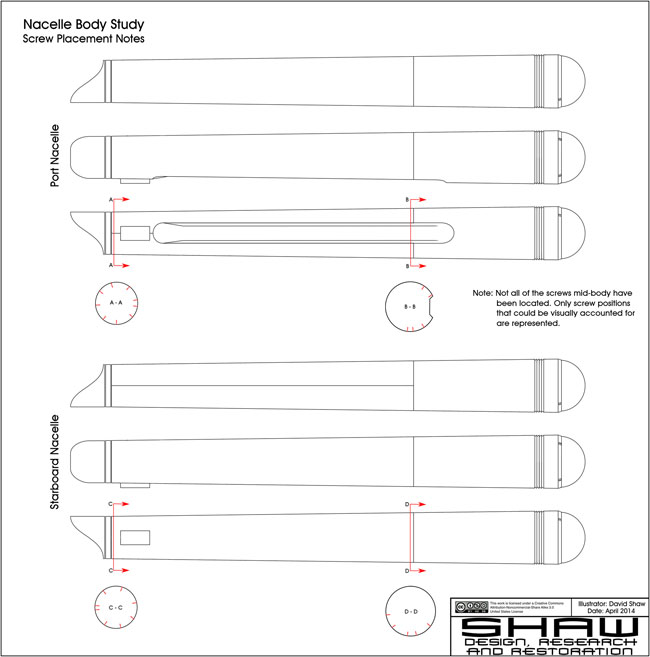
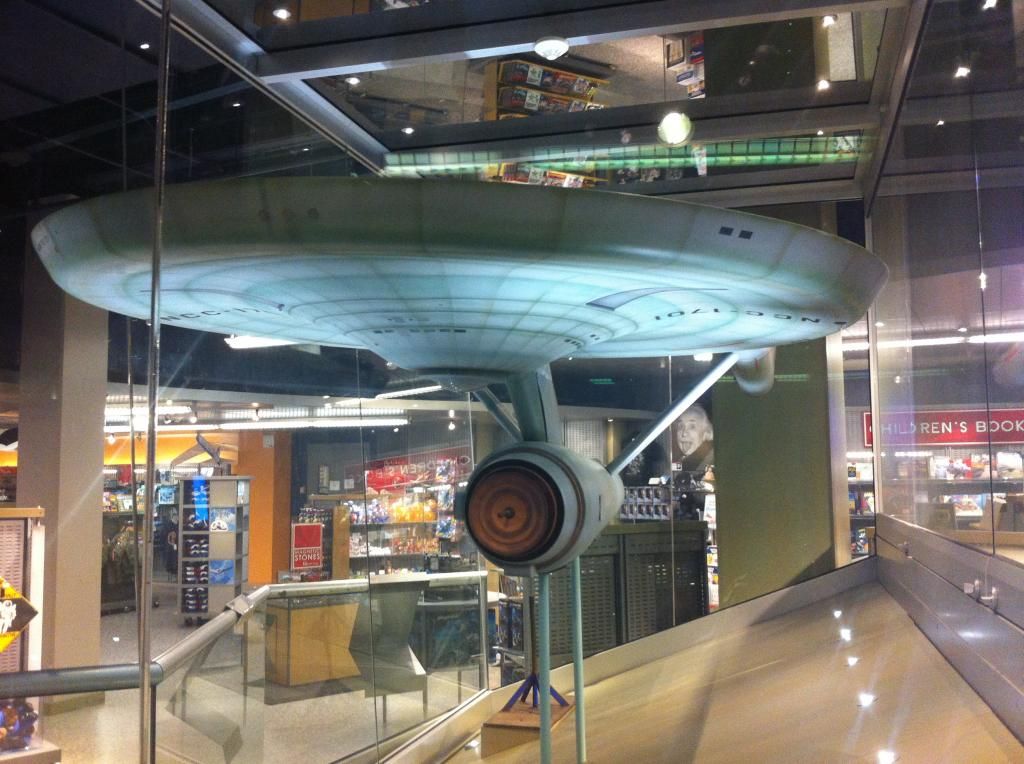
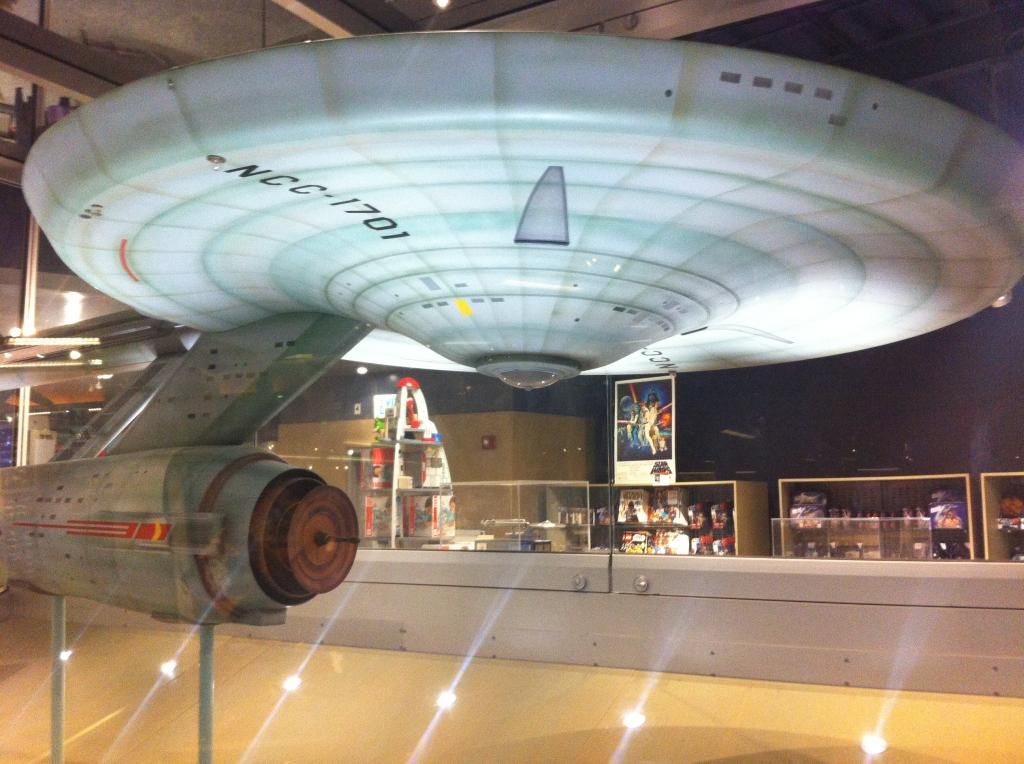
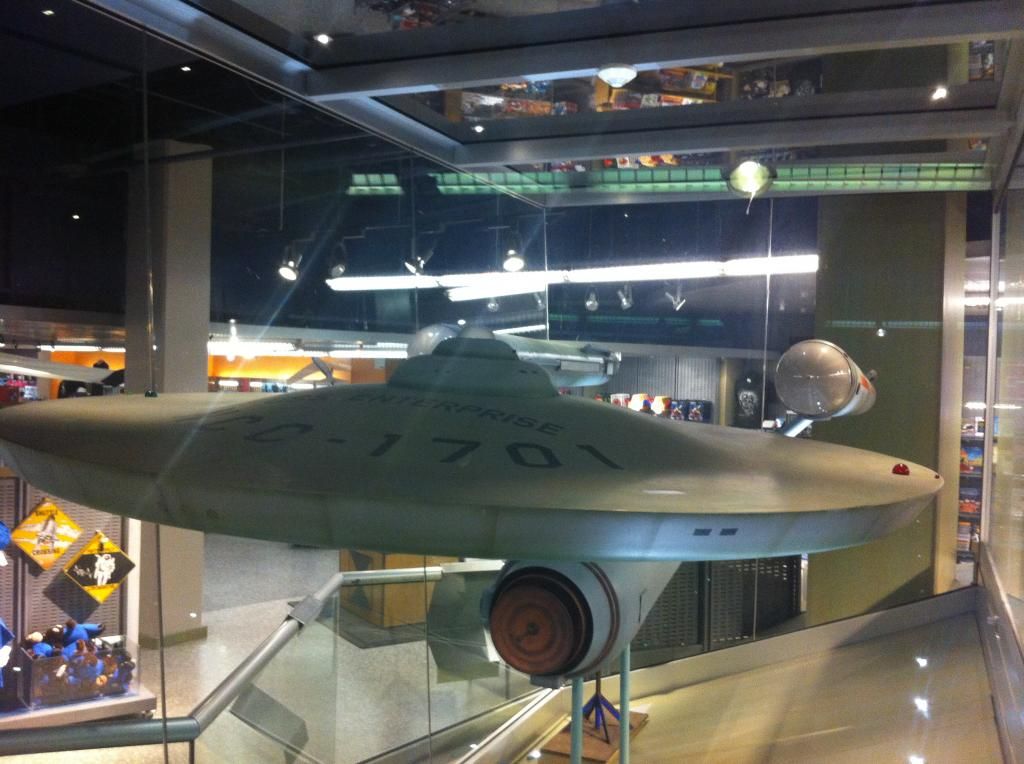

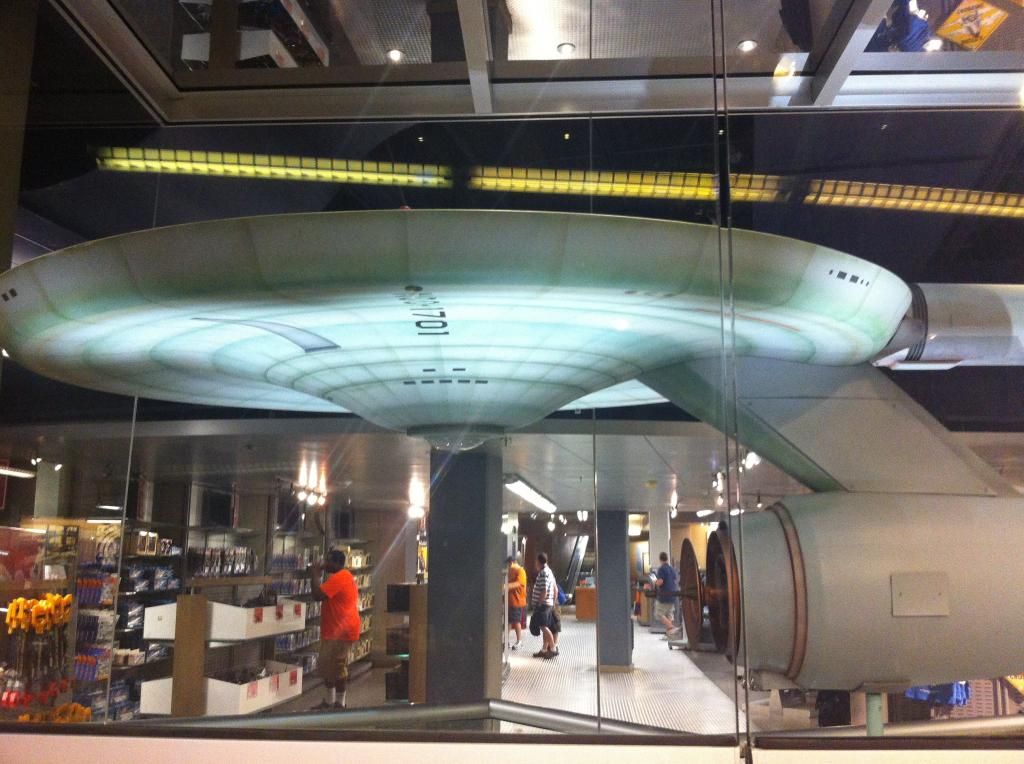
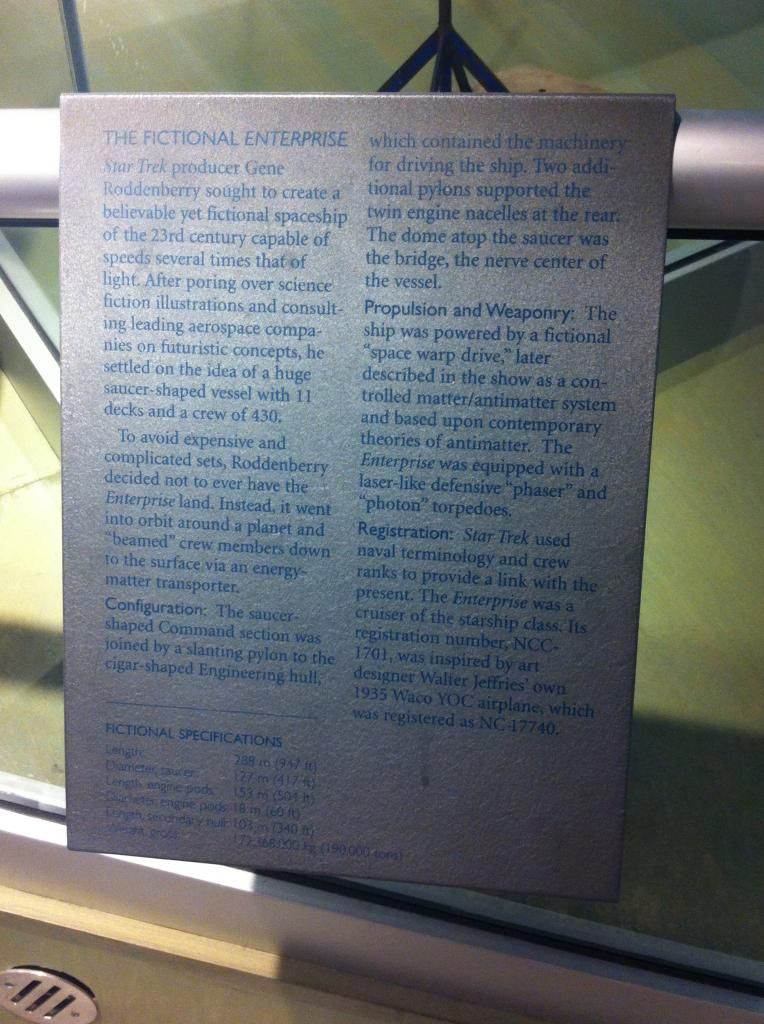
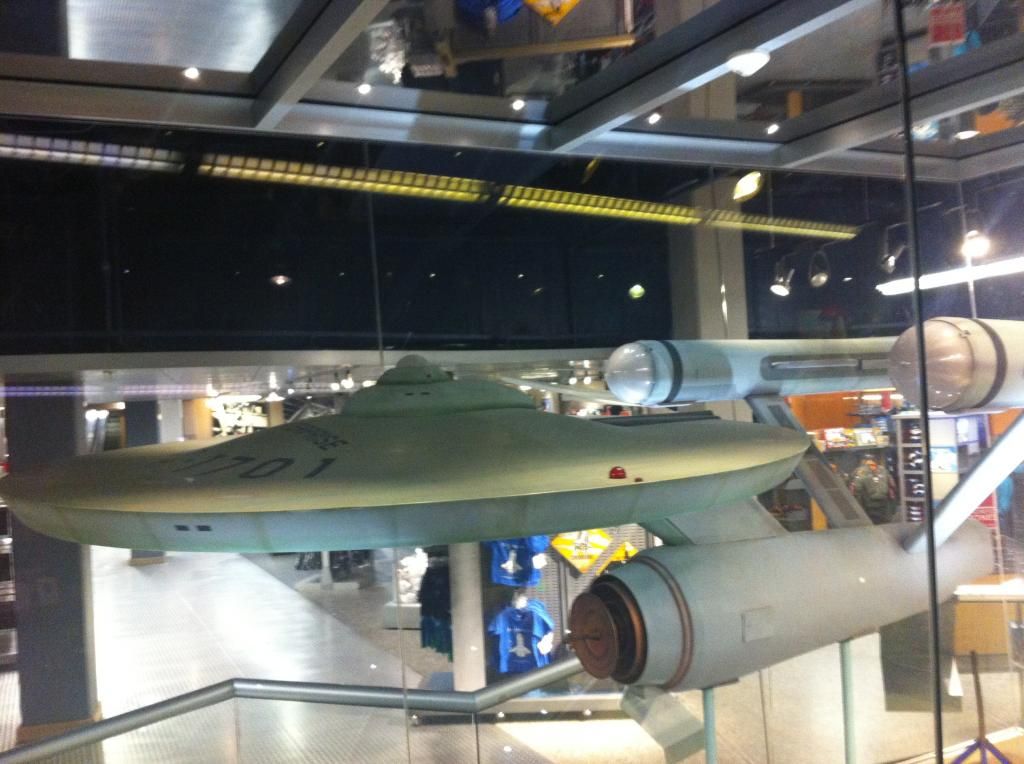
 [URL=http://s942.photobucket.com/user/MJA010174/media/IMG_3923_zps059100a6.jpg.html]
[URL=http://s942.photobucket.com/user/MJA010174/media/IMG_3923_zps059100a6.jpg.html]